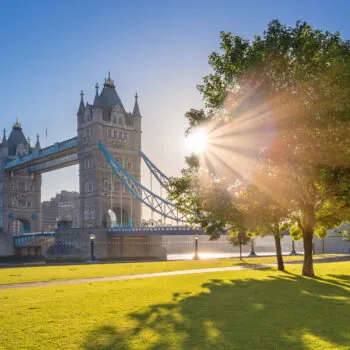Energy efficiency rarely achieves the political priority it deserves. This could cost us all dearly. What politicians need to understand is that they cannot decarbonise our economy without being serious about energy savings. A new report out today shows how.
The gap between efforts to reduce our greenhouse gas emissions and what is required to address the UK’s legally binding limits on them is most glaring in our homes and offices, which are responsible for one third of our emissions tally. In the foreword to a landmark report published today – Affordable Warmth, Clean Growth – Lord Deben, Chairman of the Committee on Climate Change, says that “it is in transforming the built environment that the battle against climate change should now be raging”.
Sadly, it isn’t. Homes continue to be built to poor energy performance standards and, damningly, the UK’s existing housing stock languishes as one of the least energy efficient in Europe.
Due to pressure from the UK’s major housebuilders, the introduction of zero carbon new building standards in England has been put on hold indefinitely. And because of popular pressure to cut household energy bills quickly, misguided Government chops and changes to planned policy have seen investment to improve the energy performance of the existing housing stock fall by half since 2012 while energy prices and costs have continued to rise.
To avoid being trapped in buildings for decades that aren’t clean and cheap to run, everything we construct and everything we renovate is going to have to reach the highest energy performance and be done to the highest quality standards. This means becoming world-leading in terms of improving running costs, comfort, indoor air quality, safety and resilience to extreme weather events along the way.
These benefits are attainable. Energy demand in the housing stock fell by one fifth between 2004 (when it peaked) and 2015 despite a proliferation of gadgets and lighting fixtures, and rising indoor comfort levels. This change in energy demand was driven mostly by energy efficiency improvements in lighting, appliances, heating systems and insulation. Without these improvements, the typical household would have paid £490 more on their 2015 gas and electricity bill. Cuts to energy saving programmes have since slowed this trend right down.
However, a much-enhanced programme to save a great deal more energy in housing, commensurate with meeting the UK’s greenhouse gas targets, is cost-effective. Research by the UK Energy Research Centre and the University of Sussex, in which I was involved, found that the core benefits of energy savings, avoided CO2 emissions, improved air quality and increased comfort exceeded the cost of the investment by £7.5 billion. Improved health from warmer homes, jobs and growth, and avoided investment in energy network infrastructure bring many further billions of benefits. The energy saved – a quarter of today’s consumption and equivalent to the output of six completed Hinkley Point C power stations – would amount to an average saving of £270 per household each year, at today’s energy prices.
This will not happen on its own. The International Energy Agency’s Executive Director Fatih Birol knows that “the greatest efficiency gains have been led by policy, and the greatest untapped potentials lie where policy is absent or inadequate”.
Clear, coordinated and long-term ambition, sensible regulation (not red tape), subsidies for those who cannot afford to undertake renovations, and inducements for those who can, are necessary to create an environment in which a free and innovative market for energy efficient and low carbon renovation of our homes will thrive. This is the challenge to policy makers.
The report published today by the Energy Efficiency Infrastructure Group and prepared by Frontier Economics addresses that challenge head on. It sets out a comprehensive infrastructure investment programme to transform the energy performance of the housing stock, including a clear action plan for its delivery.
The report’s proposals are centred around two imperatives. First, to urgently improve the energy performance of homes owned or rented by low income as well as fuel poor households, guided by the target to improve all 4.7 million to an energy performance rating of C (on an A to G scale) by 2030. The public subsidy-driven approach proposed is critical to ensuring that climate policy is socially acceptable and the transition to a low carbon economy is fair.
Second, to maximise the private investment contribution from those who are better off in meeting a target to get all 14.6 million remaining homes to a C rating by 2035. Here, the report’s proposals centre around a combination of driving demand (through sensible but mandatory minimum standards at point of rental and sale, and Stamp Duty which varies with properties’ energy performance as well as purchase price) and making it easy (through low cost loans, salary sacrifice and small inducements).
Taken together, delivery of the programme would require £1.7 billion of public sector investment per year (up from £0.6 billion today), which is designed to leverage an annual £3.9 billion of private investment. This investment is more than affordable. The UK’s market for housing repair and maintenance was worth £25 billion in 2016. The Treasury intends to spend £170 billion on housing and economic infrastructure, as well as R&D programmes, over the next five years. Diverting a small share of these capital funds to retrofitting homes would fully fund the programme and would provide economic returns comparable to any other national infrastructure project. Crucially, its societal and economic benefits would be far more immediate and more widely enjoyed than those from road or rail projects.
The principles, imperatives and benefits are clear: now is the time for the Government to lead investment for a full-scale transformation of our housing energy infrastructure. Without it, the UK Government will fail to meet its climate obligations, lose international standing and severely undermine society’s acceptance of the transition to a clean economy. And all the while energy bills will be rising unnecessarily for their increasingly hard-pressed owners and tenants. It is time for energy efficiency to be made an infrastructure investment priority at last.


